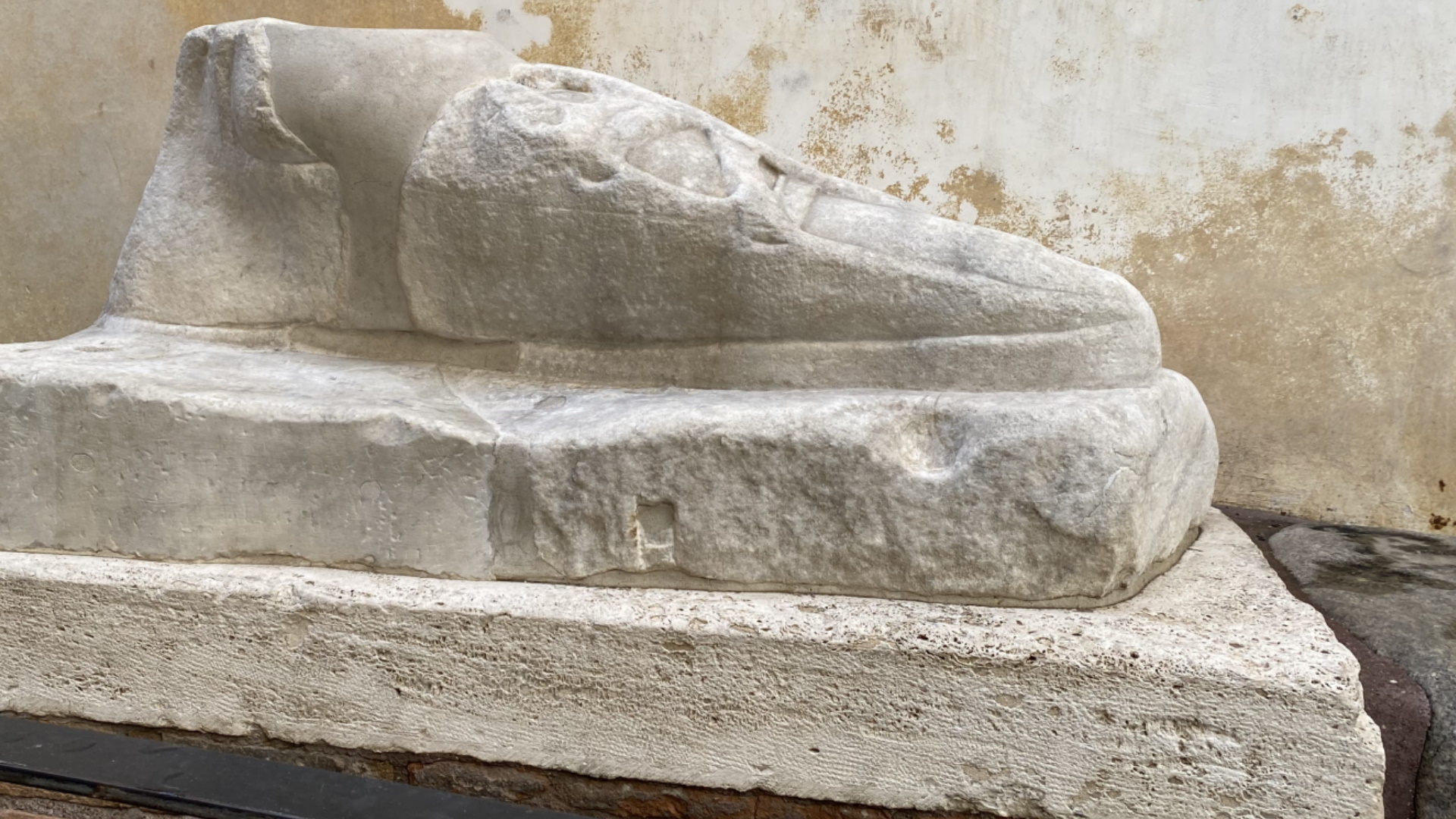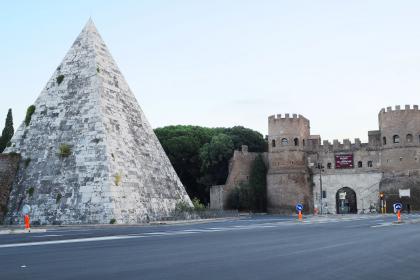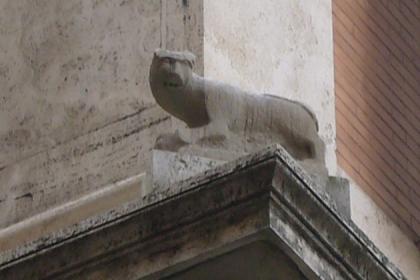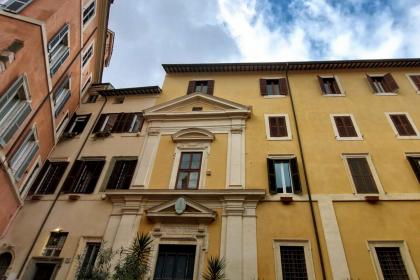
Versteckt am Ende einer Gasse im Rione Pigna, nur wenige Schritte vom Pantheon entfernt, steht auf einem hohen Sockel ein erstaunlicher, mehr als einen Meter langer Marmorfuß, den die Römer besonders schätzten und der der gleichnamigen Straße ihren Namen gab („Piè di marmo“ bedeutet Marmorfuß). Es handelt sich offenbar um die Überreste einer kolossalen römischen Statue, die, wenn man alle Proportionen berücksichtigt, gut acht Meter hoch gewesen sein muss, was in etwa der Höhe eines zweistöckigen Hauses entspricht.
Der Fuß (der linke, um genau zu sein) ist aus einem einzigen Marmorblock mit Sockel gemeißelt und trägt die Crepida, ein typisches Schuhwerk griechischen Ursprungs, d. h. eine Sandale mit hochgezogener Sohle und Lederschnüren, die sich um den Spann wickeln. Die Statue, die sie trug, war möglicherweise ein Akrolith mit einem hölzernen Körper, der mit einem echten Tuch bedeckt war, und befand sich wahrscheinlich im wichtigsten ägyptischen Heiligtum in Rom, dem so genannten Iseum Campense, dem opulenten und grandiosen Tempel, der Isis und Serapis gewidmet war. Obwohl von seinen Strukturen nichts oder fast nichts erhalten geblieben ist, sind die kleinen Obelisken, Sphinxen, Löwen und die Überreste der anderen Statuen, die ihn schmückten, noch heute in den Straßen und Museen der Stadt zu sehen. So stammen beispielsweise die kleine Katze auf dem Gesims des Palazzo Grazioli und die so genannte Madama Lucrezia aus Iseo.
Im 16. Jahrhundert wurde der Marmorfuß an der Wand eines Palastes am Eingang der heutigen Via del Piè di marmo zur Piazza del Collegio Romano aufgestellt. Im Jahr 1878 wurde der Marmorfuß jedoch einige Meter zurückversetzt und an seinem heutigen Platz in der Via Santo Stefano del Cacco aufgestellt, um den Trauerzug von König Viktor Emanuel II. nicht zu behindern. Und selbst in dieser Straße ist die Erinnerung an den den ägyptischen Gottheiten gewidmeten Tempel spürbar: „Cacco“ ist nämlich die volkstümliche falsche Aussprache von Makake, ein Spitzname, der einer in der Gegend gefundenen Statue gegeben wurde, die den Gott Thot in der Gestalt eines Pavians darstellt.
Die ägyptische kultur in Rom

 Condividi
Condividi
Ein Zoo aus Stein

Una passeggiata per le vie del centro storico alla ricerca di animali simbolici
Kirche Santo Stefano del Cacco

 Condividi
Condividi
Informationen
 Condividi
Condividi
Location
Um mehr über alle barrierefreien Dienste zu erfahren, besuchen Sie den Abschnitt barrierefreies Rom.











































